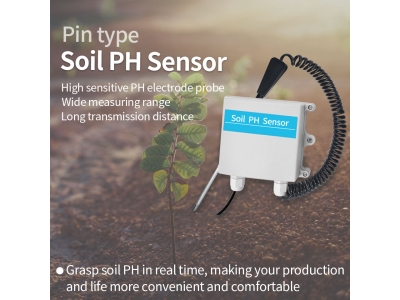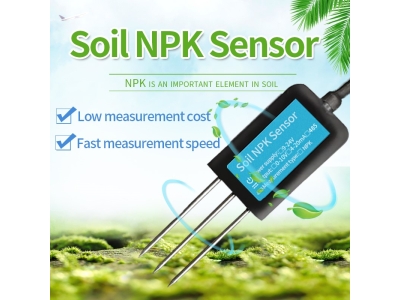Agriculture is an essential industry that provides food and resources for the growing global population. With the increasing demand for sustainable and efficient farming practices, precision agriculture has emerged as a promising solution. One of the key technologies driving precision agriculture is soil sensors. These devices enable farmers to monitor soil conditions in real-time, make informed decisions, and optimize resource allocation. In this article, we will explore the significance of soil sensors in smart farming and how they are shaping the future of precision agriculture.
Understanding Soil Health:
Soil health is a critical factor in crop production. It affects nutrient availability, water retention, and overall plant growth. Traditionally, farmers relied on visual inspection and manual soil sampling to assess soil health. However, these methods were time-consuming and provided limited insights. Soil sensors revolutionize this process by providing continuous and accurate data on various soil parameters. These parameters include moisture content, temperature, pH levels, electrical conductivity, and nutrient levels. By monitoring these factors, farmers can gain a comprehensive understanding of soil health and make data-driven decisions.

Real-Time Monitoring and Data Collection:
Soil sensors are designed to be installed directly in the ground, allowing for real-time monitoring of soil conditions. These sensors are equipped with probes that measure different soil parameters at regular intervals. The collected data is transmitted wirelessly to a central system, where it is stored and analyzed. This real-time monitoring enables farmers to detect changes and trends in soil conditions promptly. By having access to up-to-date information, farmers can take immediate action and prevent potential issues such as nutrient deficiencies, overwatering, or soil erosion.
Precision Irrigation and Water Management:
Water scarcity is a significant challenge in agriculture, making efficient water management crucial. Soil sensors play a vital role in precision irrigation, where water is applied based on the specific needs of each crop and soil type. By continuously monitoring soil moisture levels, farmers can determine the optimal timing and amount of irrigation required. This prevents water wastage and reduces the risk of overwatering or underwatering. Precision irrigation not only conserves water but also improves crop yield and quality by ensuring that plants receive the right amount of moisture at the right time.
Nutrient Management and Fertilizer Optimization:
Proper nutrient management is essential for healthy plant growth and minimizing environmental impact. Soil sensors provide valuable insights into nutrient levels in the soil, allowing farmers to optimize fertilizer application. By monitoring nutrient concentrations, farmers can adjust their fertilizer schedules and quantities accordingly. This precision in nutrient management reduces fertilizer waste, minimizes nutrient runoff, and lowers the risk of groundwater contamination. Soil sensors also help identify nutrient deficiencies or imbalances, enabling farmers to address them promptly and prevent crop yield losses.
Disease and Pest Management:
Early detection and prevention of diseases and pests are critical for crop protection. Soil sensors can contribute to this aspect of smart farming by providing data on soil conditions that influence disease and pest prevalence. For example, certain pests thrive in moist soil, while others prefer drier conditions. By monitoring soil moisture levels and other parameters, farmers can anticipate and mitigate pest infestations. Soil sensors also help in identifying areas of the field that are prone to specific diseases, allowing targeted interventions and reducing the need for widespread pesticide applications.
Enhanced Crop Planning and Decision-Making:
Accurate and timely data from soil sensors empower farmers to make informed decisions regarding crop planning and management. By analyzing historical data, farmers can identify patterns and trends in soil conditions, helping them choose the most suitable crops for their fields. Soil sensors also aid in determining the optimal planting and harvesting times based on soil temperature and moisture levels. This data-driven approach improves crop productivity, reduces risks, and enhances overall farm profitability.
Environmental Sustainability:
Smart farming practices driven by soil sensors contribute to environmental sustainability in multiple ways. Precision irrigation and nutrient management reduce water and fertilizer wastage, minimizing the impact on natural resources. By preventing overuse of pesticides through targeted interventions, soil sensors help preserve biodiversity and protect beneficial organisms. Additionally, optimized crop planning and decision-making reduce land degradation and promote sustainable land use practices. By adopting smart farming techniques,






